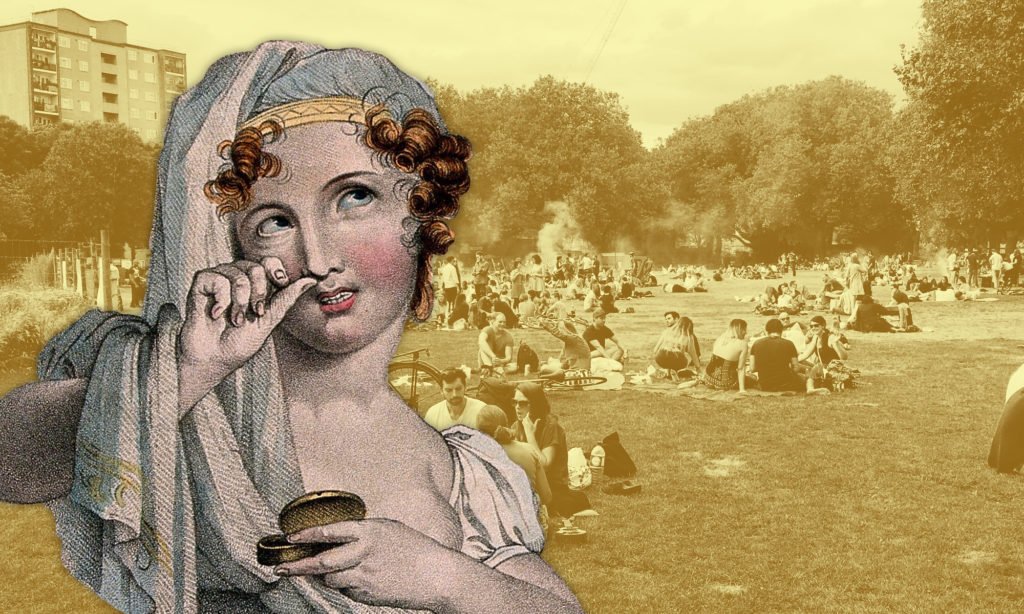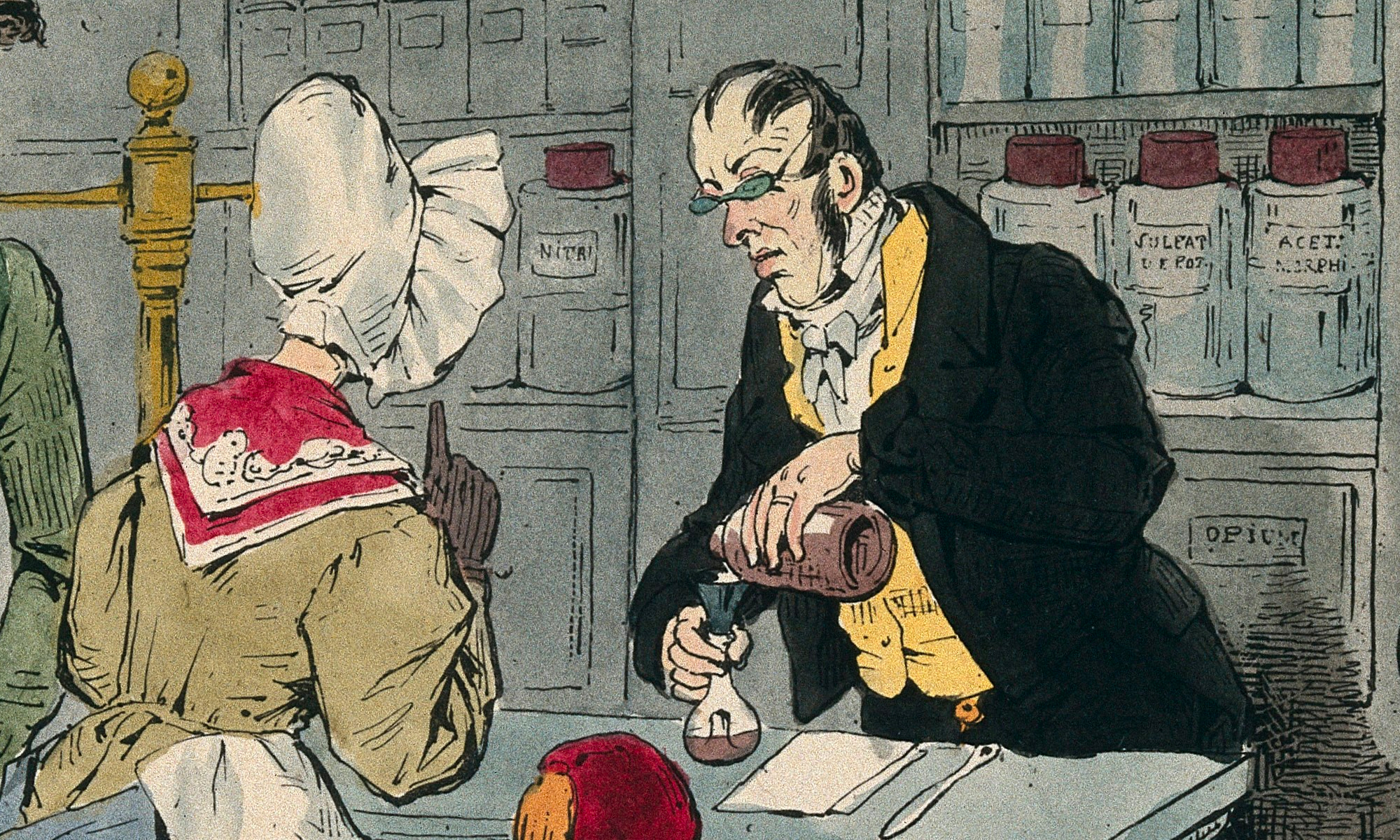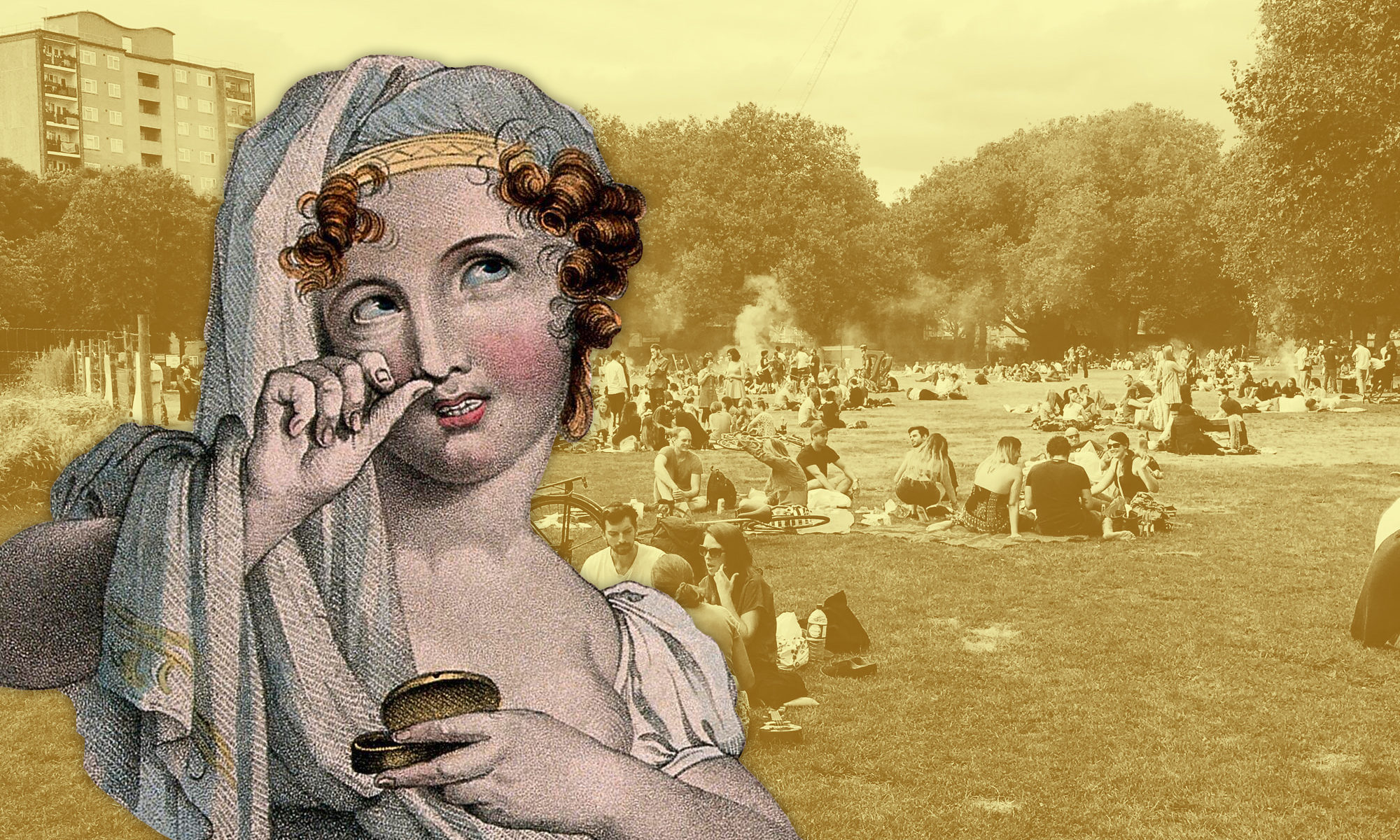Intoxicating Spaces and Urban Policy: Negotiating Public Space and Drug Consumption
A free panel discussion organised by the HERA research project Intoxicating Spaces: The Impact of New Intoxicants on Urban Spaces in Europe, 1600–1850 in partnership with Mainline, to be held live via Webex.
Tuesday 5 October 2021, 5–6:30pm CET
Intoxicating substances – whether licit or illicit, ‘hard’ or ‘soft’ – are an integral part of everyday life, in particular in social interactions. In high density and socially diverse cities, pressure on space is great. So how do cities and urban populations past and present accommodate drug consumption and negotiate public space use? Listen to our panel discussion between experts from research, policy, and prevention.
Panellists
- Machteld Busz (Mainline)
- Johan Edman (Stockholm University)
- Dagmar Freist (University of Oldenburg/Intoxicating Spaces)
- Hayley Murray (Amsterdam Institute for Global Health and Development)
- Ton Nabben (Amsterdam University of Applied Sciences)
- Toine Pieters (Utrecht University/Intoxicating Spaces)
- Florian Pittner (Palette Hamburg)
- Gabrielle Robilliard (University of Oldenburg/Intoxicating Spaces)
- Rüdiger Schmolke (SONAR Safer Nightlife Berlin)
- Stephen Snelders (Utrecht University/Intoxicating Spaces)
The Issue
Public spaces in our cities are shared, multifunctional sites and points of voluntary and forced encounter between different groups in a community. Although they often have an intended function – a public park may, for example, ostensibly serve as a green space, a place for young children to play and adults to exercise, etc – people use these spaces for entirely different purposes, sometimes at odds with laws or prevailing social and cultural expectations: a park may just as well function as hub for drug dealing, a makeshift ‘home’ for the homeless, and a place for people to congregate and consume illegal substances. Such multifunctionality means that urban public spaces are sites in which conflicts over space-function, space-use, and space-meaning are negotiated between various groups in the community. This is particularly so where the consumption of mind-altering substances both legal (e.g. alcohol and cigarettes) and illegal (e.g. heroin, crystal meth, speed, etc) is concerned. Responses to these dilemmas vary from place to place, arising from the different economic conditions, cultural expectations, legal frameworks, and social realities which determine how visible drug consumption is in a particular space and how acceptable this public consumption is.
Whilst the tension between the swing and the syringe is a relatively modern phenomenon, our research on the impact of new intoxicants such as coffee, tea, tobacco, and opium in European port cities between 1600 and 1850 suggests that the consumption and trafficking/dealing of these novel substances both shaped and were shaped by urban public spaces historically too. Coffeehouses, shops, theatres, parks, and streets (to name but a few) were all spaces in which new intoxicants were processed, sold, and consumed, forging new space-uses and space-meanings alongside the old. Conflicts and negotiations sparked debates on the propriety and safety of intoxicant consumption in public spaces as well as trading and consumption bans.
Given that the sharing and negotiation of public space in relation to drug consumption is an ongoing and pressing issue in cities today all over the globe – in part because space in cities is a limited resource – together with our project partner Mainline we would like to initiate a policy-driven discussion between policy makers, stakeholders, and experts.
Project Background
The Oldenburg and Utrecht research teams have jointly conceptualised a public engagement project that uses the historical findings of the Intoxicating Spaces project as a vehicle for investigating contemporary problems and issues revolving around drug consumption and the use of public spaces in modern cities across the world. Our project partner is Mainline, Amsterdam.
It will consist of three discrete outputs, each tailored to a specific audience:
- This panel discussion, using Fast Talk methodology, will bring together experts from different cities in an email and conference consultation process aiming at generating cross-disciplinary and cross-regional discussion of case studies, policies, and strategies.
- A public Mainline webinar will build upon the Fast Talk policy-related output – issues, findings, and questions – and explore these in their contemporary and historical perspectives with the objective of public discussion and broader dissemination.
- Drawing on findings from both events, we will produce a discussion paper detailing the overall results (discussions, findings, recommendations, etc) for general dissemination.

Featured Image
Photo of London Fields by Robert Bye via Unsplash and a young woman taking snuff via Wellcome Collection (CC BY-SA 4.0)

